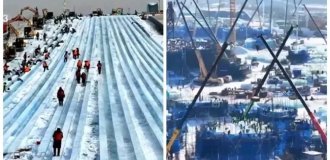Scientists warn of a possible mega-volcanic eruption (4 photos)
As always, no exact dates are given, but they promise that it will definitely happen this century and humanity will not be ready for it. 
The eruption of Mount Tambora in Indonesia in 1815 is taken as an example of the consequences of the coming tragedy. Then it exploded so hard that 24 million cubic meters of gases, ash and other volcanic debris were ejected into the atmosphere. This emission led to a widespread cooling across the planet, which entailed massive crop failures and, as a result, an increase in mortality. 
After the eruption in 1815, Tambora suddenly lost more than a third of its height - currently it does not exceed 2800 meters
Climatologist Professor Markus Stoffel is sure that a similar scenario could happen in this century. What worries the professor most is that modern humanity does not have a plan of action for such a scenario.
He studied the works of volcanologist Dr. Thomas Aubrey, and he is even more frightening that the greenhouse gases emitted over the last century could make the consequences of such an eruption even colder. 
The summit of the 6-kilometer-wide "caldera" of Mount Tambora
Geological evidence suggests that another major volcanic eruption in Indonesia in 1257, the gigantic Samalas eruption, likely helped trigger a "little ice age" that lasted for hundreds of years.
Dr. Stoffel, who teaches at the University of Geneva, said there were troubling uncertainties about humanity's future. "We are only beginning to understand what might happen," he said. "For older volcanoes, we have very little data." 
To compensate, climate scientists, geologists, and other researchers are collecting atmospheric data frozen in time in ice cores and embedded in old tree rings. The data shows that several volcanic eruptions over the past few thousand years have temporarily cooled the planet by about 1 to 1.5 degrees Celsius.
In short, volcanoes will save us from global warming, and we are not afraid of the end of the world.





















